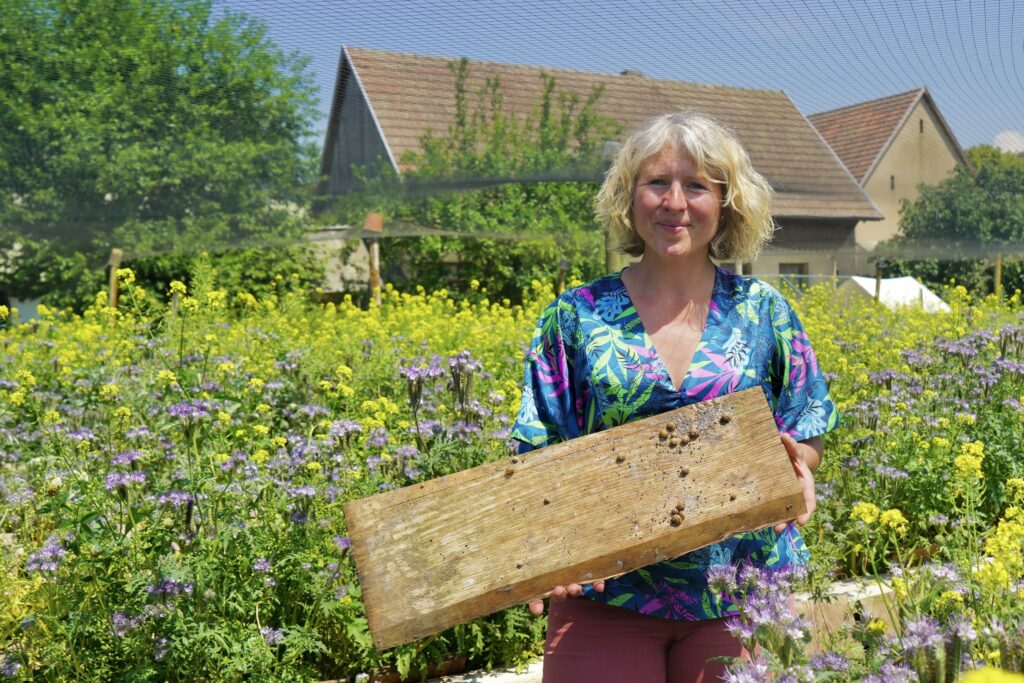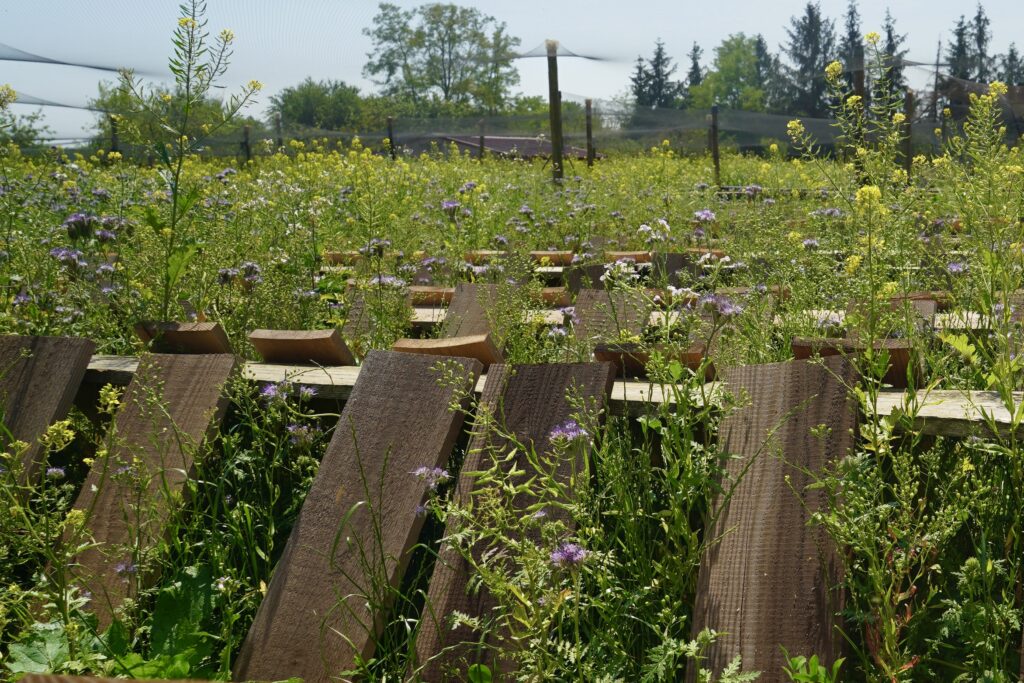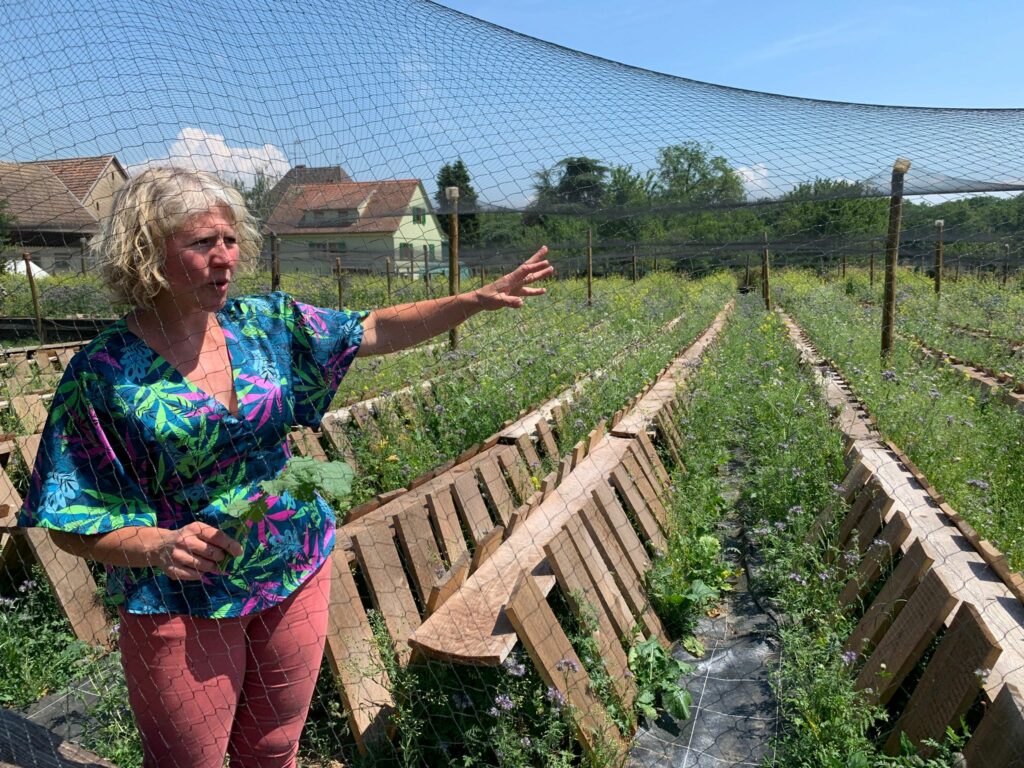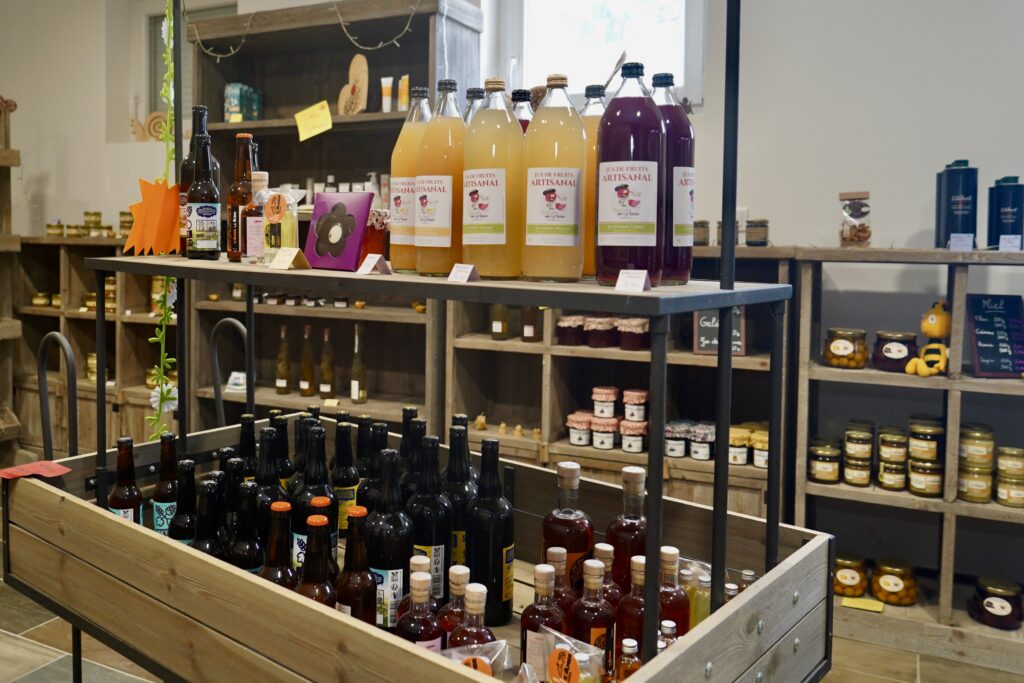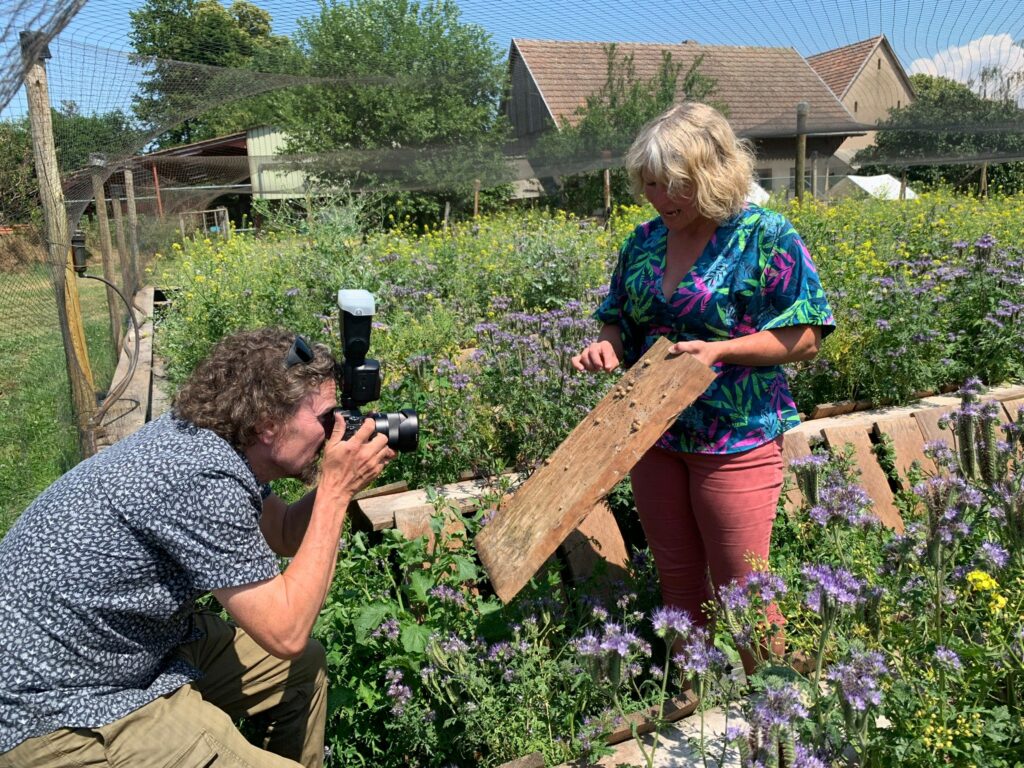Carole’s Snail Farm in the Alsace
Les Escargots de Caro
#france #snails
The protagonists of this story travel quickly if looked at relatively. ‘They can cover five to six meters per hour,’ says Carole Konradt as she shows us her snail farm or heliciculture. On a surface of of 2,600 square meters behind their farm ‘Ferme de la Gaensmatt’ in the small community of Ostheim, Carole nurtures and takes care of about 700,000 Gros-gris snails (Helix Aspersa Maxima) which are a domesticated version of the Roman snail. On first sight the enclosure looks like a bee pasture. Flowering plants of different heights blow in the wind and a great variety of insects live from the nectar that these plants produce.
But the wooden frame and overhead covering net clearly mark that there must be something worth protecting underneath it all. ‘Snails have many predators,’ says Carole from experience. Despite the protective measures she takes, during the season the business loses about a third of the snails to wild animals who use even the smallest opening to reach the protein-rich food.
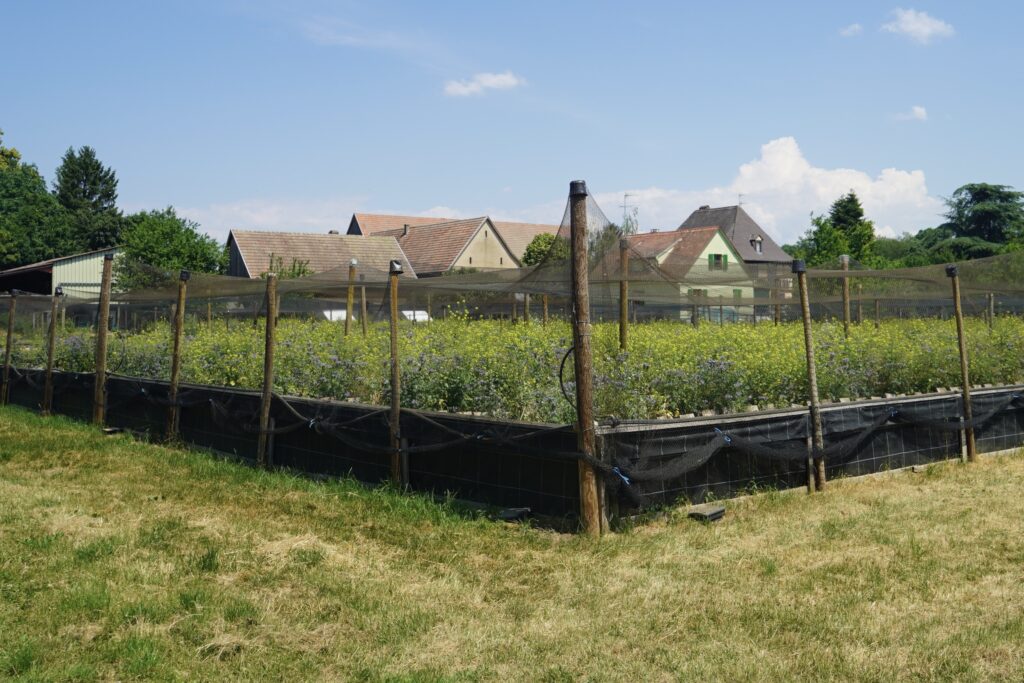
Temperature Sensitive Animals
The season for breeding snails usually begins in May and ends in September. The animals are not only sensitive to the cold, but they also do not like direct sunlight. As Carole places some of the few centimeters large snails on her hand they immediately try to flee to the underside of her palm to avoid the sunlight. As they do so you realise just how fast they can move. ‘They instinctively know that the sun is a deadly danger as they have no way to regulate their body temperature. If the sun shines for too long on them, a build-up of heat occurs in their shells and they perish,’ explains the qualified engineer.
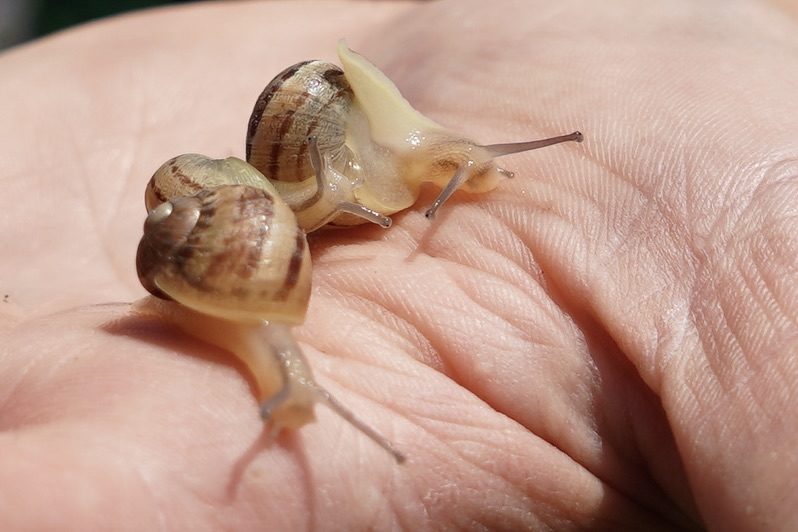
Perfect Snail Husbandry
In the spring Carole collects the few millimeters sized baby snails from colleagues who produces them in her locality so that she can place them in the outside enclosures after the last ground frost. The pens are a construction of vertical and horizontal placed wooden planks that provide shade and protection. ‘They spend the day on the underside of the boards and in the evenings we sprinkle the enclosure with water which makes them spread out to eat the plants,’ explains Carole. Most large leaf plants are the only food source in the first phase of rearing. Later they get a type of concentrated food which contains corn, beets, wheat and calcium, the latter so that the shells harden sufficiently.
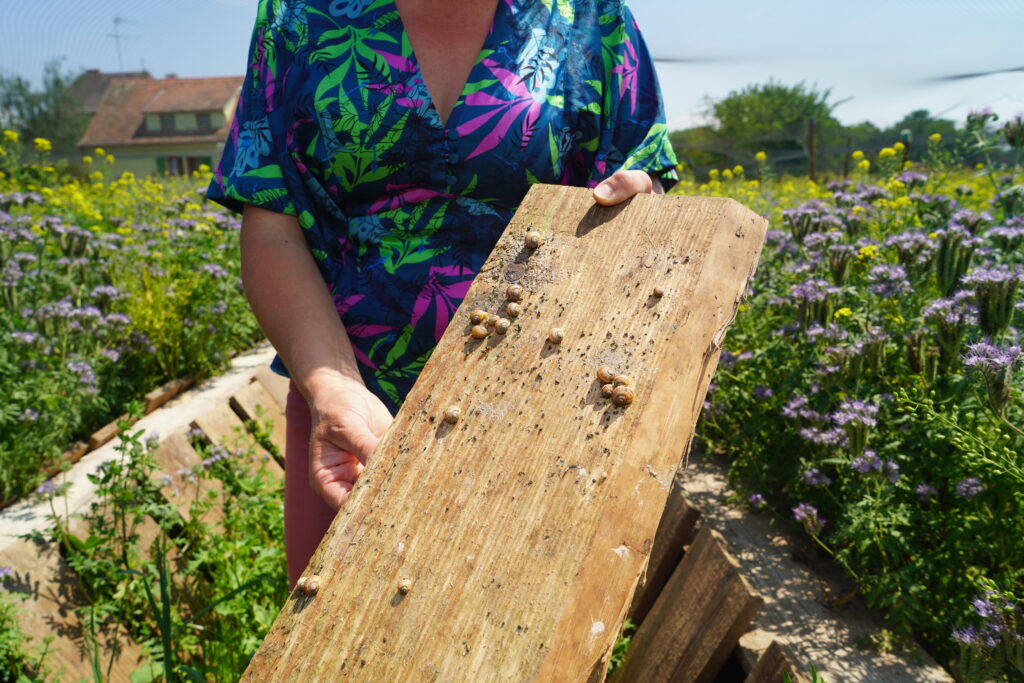
Sleeping into death
In autumn snails prepare for their hibernation in a way similar to bears. They reduce their metabolism to a minimum. Carole uses this phase for the last chapter of life for her mollusks. She collects them, puts them in meshed bags and leaves them to fast for a week. During this time they empty their intestinal contents. After this they are cooled down and so begin their hibernation time until they are next in the production line. ‘We kill the snails by placing them in boiling water,’ explains Carole. From deep sleep into death so to say. Then they are taken out of their shells by hand and the back part with innards are separated. ‘What we eat is the part of the snail that we see when it moves around. This part consists mainly of a muscle,’ specifies the producer. Pure protein of the highest quality.
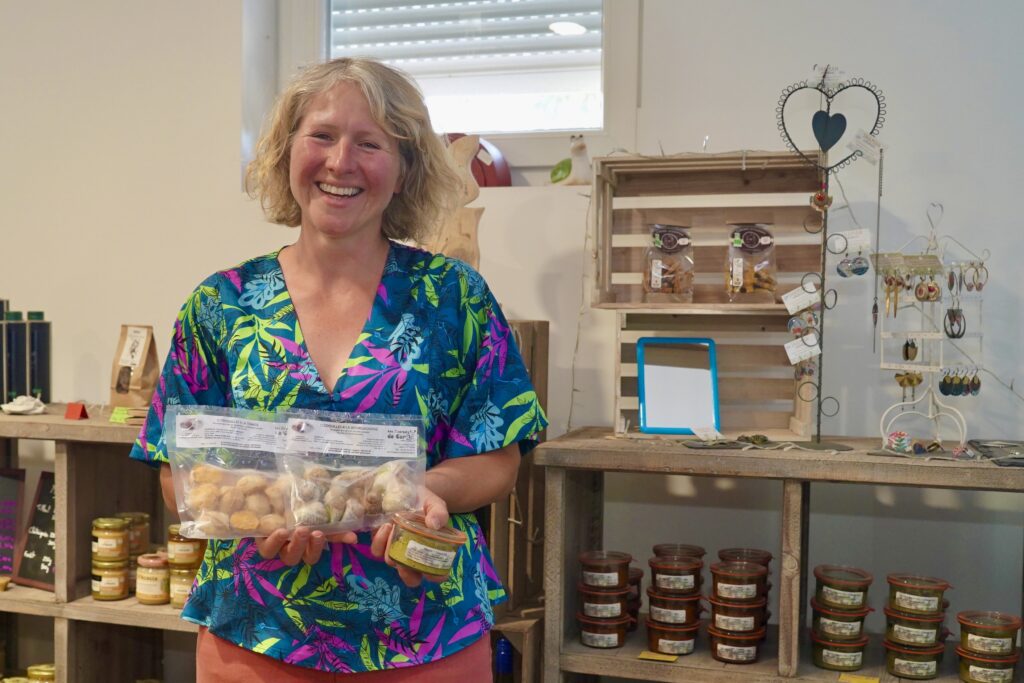
Neutral Tasting Suitable for Any Cuisine
Is it true that snails actually have no taste at all and that the sauce they are served in is what makes the culinary experience? ‘Yes, snail meat has a neutral taste and so can be refined by combing it with a variety of sauces,’ confirms Carole. She sells most of her production to private individuals in her own farm shop or at markets in the surrounding area. Carole additionally supplies restaurants in the vicinity. When Carole had the idea in 2018 to expand the existing working farm with vine and grain cultivation to include snail farming she began with 120,000 snails. Five years later the farm has grown to five times this amount. The entrepreneur’s next goal is to reproduce her own animals so that she is no longer fully dependent on the external purchase of baby snails in spring. In 2019, the couple also decided to integrate a chicken yard with organic chickens for egg production into the farm.
Carole had to teach herself all the knowledge and knowhow for this success story. Further training opportunities in the field of snail farming are few. So far, only two schools in France offer such courses. Even though snails are an integral part of Alsatian cuisine, few people have decided to produce them on a large scale. When the snails are not well then Carole has to rely on the advice of her colleagues because ‘There is also no snail veterinarian’.
